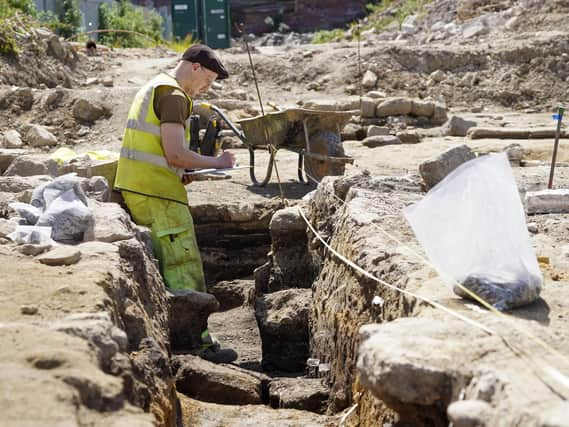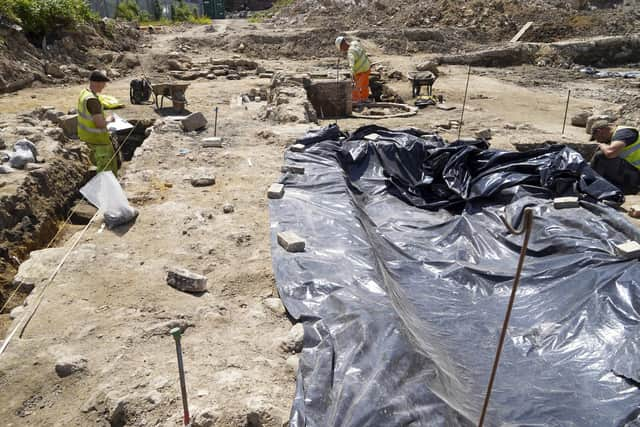Archaeologists uncover Neolithic remains in Pontefract


Excavations on the 6.4 acre site, which is earmarked for up to 80 residential properties, have revealed that the site was on low-lying ground, probably forming a pond or marsh, that was built up with deposits of soil during the 13th to the 15th centuries to make it liveable. A corn mill was known to have been located to the east of Mill Dam Lane.
The remains of post-medieval and 19th century properties have been found in the excavations, including a stone-lined cess pit that contained a urinal or chamber pot, presumably accidentally dropped into the pit when it was taken to be emptied.
Advertisement
Hide AdAdvertisement
Hide AdFrom more recent history a World War Two air-raid shelter, later used by the furniture factory for storage, was also found at the northern end of the site


A Neolithic arrowhead is proof there was human activity in the area from early prehistory onwards.
Nansi Rosenberg, director and principal consultant for Prospect Archaeology, which was commissioned to carry out the dig by developers Towngate Plc said: “The site is located between the scheduled monuments of Pontefract Castle and St John’s Priory and was always expected to contain archaeological remains, albeit damaged by the construction of the furniture factory.
“Although planning permission has been granted for residential development, the area containing the remains of the medieval mill is excluded from the area for housing and will be preserved within an area of public open space.”
Advertisement
Hide AdAdvertisement
Hide AdExcavation work is expected to continue throughout June, following which the records, artefacts and soil samples will be sent for specialist assessment.
This is the second archeological site in the area to be excavated this year. A team working in Kinsley found, among other things, a rare kiln believed to date back to Roman times.
It is the second kiln to be found in the vicinity - the first kiln was discovered during an earlier dig in January 2020.
Pontefract is rich in archeological history, Other finds in recent years include more than 30 Roman skeletons, alongside pottery, jewellery and building remains on a building site in 2017 and a few years earlier, in 2005, contractors in Ferrybridge stumbled across a 2,400 year old chariot burial site while working on an upgrade of the A1.